As promised at the end of yesterday’s post on Hygrocybe flavescens, here we have the stunning waxy cap mushroom, known as Hygrocybe punicea, or the ‘Scarlet Waxy Cap’…or is it?
Unfortunately, these waxy caps are not as easy to positively identify as the yellow ones. In the mycological community there appears to be some significant difference of opinion when it comes to labeling red waxy cap mushrooms lurking in the woods of North America. There is a general consensus that the genus Hygrocybe is correct, it is the species that remains in question.
There are a number of red Hygrocybes that share similar morphological characteristics, including Hygrocybe miniata, H. punicea, a purported variant of H. punicea known as Hygrocybe splendidissima (or H. punicea var. splendidissima), and Hygrocybe coccinea. There is some debate as to whether H. coccinea, common in the grasslands of Europe, occurs in forests of North America, even though it doesn’t look terribly dissimilar to this specimen.
This confusion regarding species stems from the fact that traditionally in biology, plants, animals, and fungi, have been classified based on their external appearance, and variations in appearance have tended toward new species designations, when perhaps they are simply variants of the same molecular group. Current DNA methods employed in distinguishing species from each other have resulted in some reshuffling and re-pigeon-holing of a number of biologic organisms. Unfortunately, in regards to fungi, it seems that the Hygrocybes at least are still awaiting their turn in the molecular reclassification process. So, here in California, we have a tendency to lump most, though not all, red Hygrocybes under H. punicea, until proven otherwise at the molecular level.
Hygrocybe punicea typically emerges in damp woodland during the winter months, favoring similar habitat to the yellow waxy cap, and in this area they are both often found under redwoods. This species is described as having a cap that is 4-12 cm in diameter, is red when young, fading to reddish orange, and eventually to orange. Hygrocybe punicea has adnexed and narrowly sinuate gills, meaning that each lamellae curves downward toward the stem before it attaches.
The gills are typically reddish-orange, to yellow-orange in color.
The stem ranges anywhere from 3-14 cm in length…but the stem color is where some of the confusion lies. Hygrocybe punicea is reportedly yellow to orange, and white at the base. The stem of some of these specimens, especially the younger mushrooms, was significantly more red than orange, and yellow at the base, more similar to the descriptions of H. coccinea. Both H. punicea and H. coccinea are reported to be quite common in this area at this time of year, depending on who you talk to of course, but overall H. coccinea is reportedly a smaller species, with the cap ranging from 2.5 to 5 cm, and not typically everting to expose the gills as is seen in these specimens.
As with Hygrocybe flavescens, the spore print of Hygrocybe punicea is white.

Spore print of Hygrocybe punicea
In regards to edibility of this mushroom, some report that this mushroom is edible, however, there are also reports that some individuals have suffered significant illness after ingesting this mushroom species.
Tomorrow, we’ll move on to something completely different, and significantly less controversial!

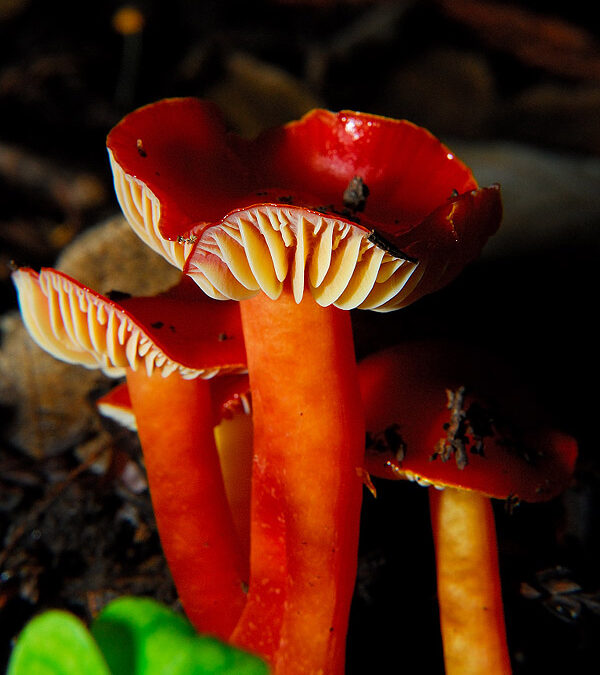
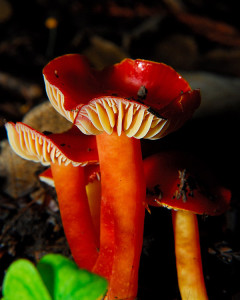
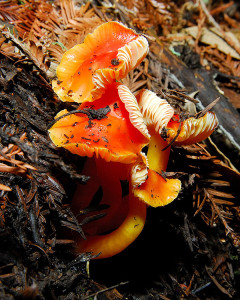

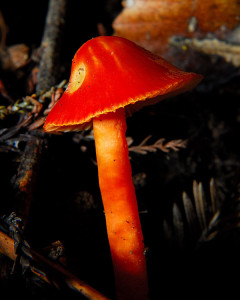
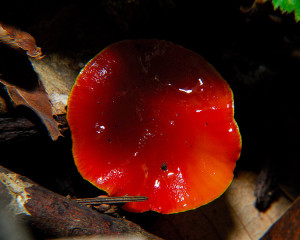
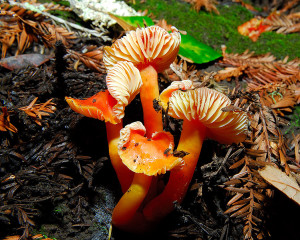
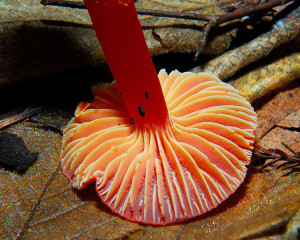
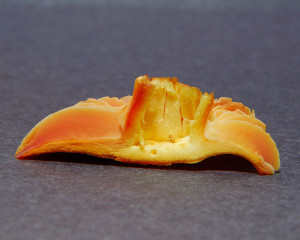
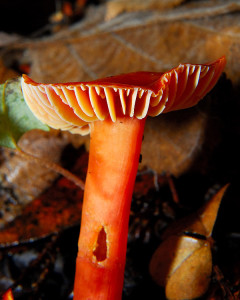







Beautiful photos and so much information… very well done … I think I would stay away from those red mushrooms to be sure nature has a way of warning with red… with exceptions of course. They really are stunning creatures … especially seen from your lens.
I love that photo of the gills- it looks like a jellyfish!
Stunning photos. And great info on the mushrooms.